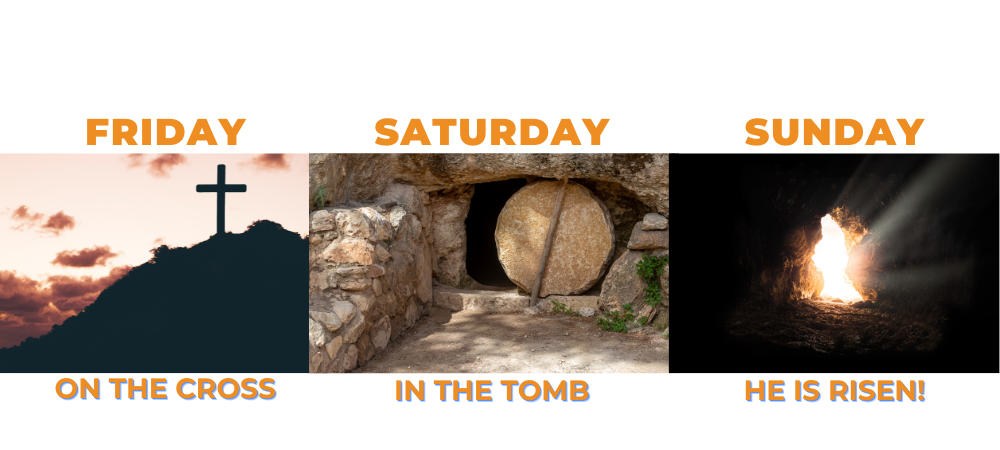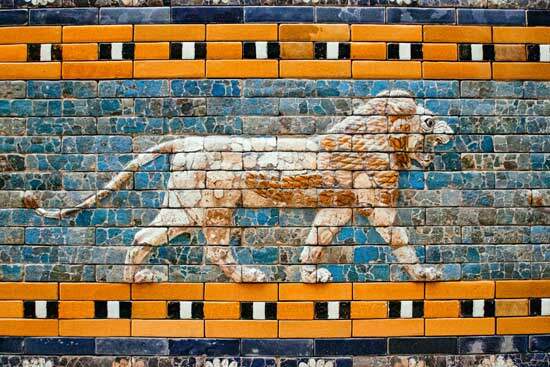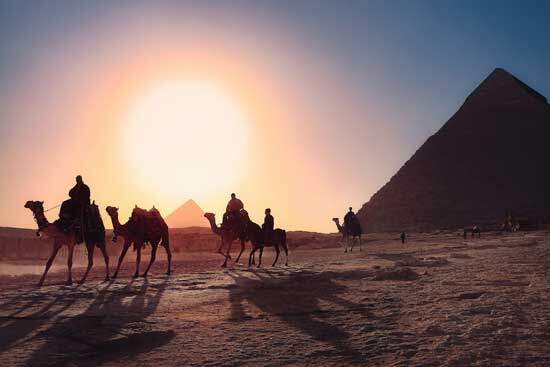If you know of any Adventists, you may have noticed that they stop their work or business activities before sundown on Friday. What’s the reason behind this?
It’s because Adventists believe the Sabbath starts at sundown on Friday and goes until sundown on Saturday. They base this practice on Scriptural guidance that goes all the way back to Creation.
To learn more about why we keep the Sabbath this way, we’ll look at:
- The timing of Sabbath at Creation
- Sabbath started and ended at sundown throughout the Bible
- The Jews keep the Sabbath that way even today
- Seventh-day Adventists have been keeping it between sunsets since 1855
- The Biblical way of keeping the Sabbath is still applicable to us today
Let’s begin with the origins of the Sabbath and its observance.
The timing of Sabbath at Creation

Photo by Luca Bravo on Unsplash
The Bible introduces the Sabbath at the end of the Creation week after God spent six literal days creating all “the heavens and the earth” and everything in it (Genesis 2:1, NKJV). And just like the six days before, this day began in the evening.
Here’s why:
Each day of Creation was a separate period divided into two parts—an evening and a morning. Each evening was a new day, which continued through the morning until the following evening when another day began (Genesis 1:1, 5, 8, 13, 19, 23, 31).
The Bible concludes the sixth day by saying, “The evening and the morning were the sixth day” (Genesis 1:31, NKJV).
So when the Sabbath shows up in Genesis 2:2, it picks up the same order of counting a day. It started in the evening, progressed through the morning, and continued until the next day began at sunset the following evening.
God provided a full 24 hours for His children to spend time with Him and enjoy what He had made for them.
Sabbath started and ended at sundown throughout the Bible
People continued to start Sabbath and end it at sundown throughout the history of the Scriptures. We find numerous instances of God’s people keeping it this way in the Old Testament and the New Testament.
Let’s look at some examples:
Jesus’ followers observed the Sabbath from Friday evening
 The events surrounding Jesus’ death and burial show that Sabbath started and ended in the evening for His followers.
The events surrounding Jesus’ death and burial show that Sabbath started and ended in the evening for His followers.
Matthew 27:45–56 tells us that Jesus died at around 3:00 p.m. And after His death was confirmed, two of His secret disciples—Joseph of Arimathea and Nicodemus—asked to bury his body that evening.
They buried Him in a nearby tomb because it was “the preparation day and the Sabbath drew near” (Luke 23:54; John 19:31–42, NKJV).
They wanted to be careful not to start burial activities during the Sabbath hours.
Also, women who had followed Jesus from Galilee wanted to embalm His body with spices. But since the Sabbath was about to begin, they only went to see where He was buried. Then “they rested on the Sabbath according to the commandment” (Luke 23:56, NKJV).
They waited until “the Sabbath was past” before returning to the tomb early in the morning on the first day of the week (Mark 16:6, NKJV).
Today, we annually celebrate Easter on a Sunday to remember Jesus’ resurrection. This resurrection day is referred to as the first day of the week.
And we have Good Friday to mark when Jesus died. That’s the preparation day referred to here.
So we can safely conclude that the day between the two was Saturday.
This means that even in the New Testament, Jesus’ disciples knew that the Sabbath begins at sundown on Friday and runs to sundown on Saturday.
Annual celebrations in the Bible began in the evening
 In Leviticus 23, the Israelites received instructions on how to observe various yearly feasts. The days of these feasts also started in the evening.
In Leviticus 23, the Israelites received instructions on how to observe various yearly feasts. The days of these feasts also started in the evening.
The most solemn of these feasts was the Day of Atonement—also known as “Yom Kippur” in Hebrew (Leviticus 23:26–32). It was held on the tenth day of the seventh month and is considered one of the Jewish high days.
And though such days didn’t always fall on the seventh day of the week, they were often referred to as yearly or celebratory “sabbaths.” Some, like Yom Kippur, had specific directions not to work because it was a holy day of solemnity, focus, and contemplative rest.
Even so, these events differed from the weekly Sabbath of the fourth commandment.
But the one thing they had in common was that they were all observed from evening to evening. For the Day of Atonement, God instructed His people to keep it from the evening of the ninth day of the seventh month to the evening of the tenth (Leviticus 23:32).
From this, we see a major nation of people—Israel—keeping track of days from evening to evening.
Nehemiah prepared for the start of the Sabbath just before it became dark
When the Israelites returned to Jerusalem after the Babylonian captivity, Nehemiah led them to reform in how they observed the Sabbath. He required them to stop trading before sunset on Friday evening.
The problem was that their neighboring countries were trying to get them to do business with them on Sabbath (Nehemiah 13:15-16). And this “business” often meant significant bartering. It’s likely they weren’t simple transactions, and they probably were trading luxuries rather than necessities.
To ensure this didn’t disrupt the Sabbath, Nehemiah set the following in motion:
“Just as it became dark at the gates of Jerusalem before the Sabbath, [he] ordered that the doors be shut, and that they were not to open them until after the Sabbath. Then [he] stationed some of [his] servants at the gates so that no load would enter on the Sabbath day” (Nehemiah 13:19-20, NKJV, emphasis added).
This demonstrates how seriously God’s people took the Sabbath’s meaning and timing.
Even today, Jews begin the Sabbath and all feasts in the evening
Much of the Bible is in the context of Jewish culture. And even today, these cultural traditions are deeply rooted in biblical practices, including the start of the Sabbath and other feasts in the evening rather than in the morning.
The Jews observe Sabbath from evening to evening

Photo by Corbin Mathias on Unsplash
As we’ve seen in Bible times, the Israelites observed the Sabbath from Friday evening to Saturday evening. The Jewish people have kept this tradition integral to their community and family life.
They trace it from the Creation account in Genesis 2:2–3, as well as the Ten Commandments in Exodus 20:8–11 and Deuteronomy 5:12–15.
And as we’ve seen in the book of Nehemiah, they still kept it from evening to evening during their recorded biblical history.
After the Babylonian exile, the Jews became more strict in their observance of God’s laws in the Torah. This was an effort on their part to uphold the Mosaic laws.
While they anticipated the coming of Yahshua (the Messiah), they were careful to obey God’s laws so they could avoid another captivity.
Their religious leaders expounded on the laws and formed what became known as rabbinical laws. These are laws that they followed during the time of Jesus and which are largely followed by modern Jews today. These include prohibitions on such activities as carrying heavy “burdens,” walking too far, boiling water, and more.1
The Sabbath was also expounded upon, and details of its observance were outlined. This included its observance spanning from sundown to sundown.
Today, Jews celebrate the Sabbath—known as Shabbat in Hebrew or Shabbos in Yiddish—from Friday night at sunset to Saturday night at sunset. In fact, an observant Jew will begin it even a little before sunset.
This is because they consider it not only a sacred day but also a delightful day worth looking forward to.
They begin it on Friday evening, lighting candles and enjoying a special Shabbat meal for dinner. They go to the synagogues on Saturday for prayer and instruction from the Torah. And they greet each other with “Shabbat Shalom,” which translates to “Sabbath peace.”
Then when Saturday night comes, they hold a ceremony called “Havdalah” that separates Shabbat from the rest of the week.
Feast days in the Bible went from sundown to sundown

Photo by Simon Berger on Unsplash
As we saw in Leviticus 23, the Israelites were commanded to observe the Day of Atonement from evening to evening. In fact, all their holidays started in the evening. And today, Jews still do the same.
Let’s look at one of these feasts: the Passover, or Pesach in Hebrew.
We find the Passover in Exodus 12.
It was meant to celebrate freedom and family in remembrance of the Israelite Exodus from Egypt.
In Leviticus 23:5, we read that it began at twilight on the 14th day of the first month. According to the dictionary, twilight is “the period of time at the end of the day after the sun has gone down.” It’s the time just before nightfall.
Even today, Jews begin the Passover in the evening, just before the night begins. Those who are Orthodox especially maintain a strict observance of this practice.
Seventh-day Adventists observe the Sabbath from sundown to sundown
Seventh-day Adventists are Christians who observe the biblical Sabbath today. And they keep it from sunset Friday to sunset Saturday, something they discovered in their Bible studies back in 1855. Their fundamental belief about the Sabbath mentions more of the reasons behind their Sabbath observance:
“The fourth commandment of God’s unchangeable law requires the observance of this seventh-day Sabbath as the day of rest, worship, and ministry in harmony with the teaching and practice of Jesus, the Lord of the Sabbath.
“The Sabbath is a day of delightful communion with God and one another. It is a symbol of our redemption in Christ, a sign of our sanctification, a token of our allegiance, and a foretaste of our eternal future in God’s kingdom.”
Like the Jews, they trace the origins of the Sabbath from the creation week. And they find evidence for keeping it from sundown to sundown in the Bible.
But they didn’t always know this truth. They learned it from the Seventh-day Baptists.
Here’s their story.
After the time of Jesus and the apostles, the early Christian church kept the weekly seventh-day Sabbath.
But through the years, the Sabbath became mixed up with other cultural traditions. Eventually, Christians in most parts of the known world kept Sunday instead of Saturday as the day of worship. They called Sunday, “the Lord’s day.”
Additionally, other church systems started observing the day of worship from midnight to midnight. But in many places, they maintained the evening-to-evening practice.

Photo by Julian Hochgesang on Unsplash
Finally, the Reformation came in the 16th century, and many groups started studying the Bible for themselves. Some, like the Seventh-day Baptists, discovered the true Sabbath was supposed to be kept on Saturday rather than Sunday.
So they started observing it.
But when they read the Sabbath was to be kept “from evening to evening,” they interpreted it to mean from 6:00 p.m. to 6:00 p.m. (Perhaps this was just an easy way to standardize the practice).
But this whole idea of Saturday instead of Sunday didn’t go well with the established reformed church in England. So they were forced to leave England due to persecution. They took the journey across the Atlantic and ended up in America.
Once in America, they taught the truths to other Sunday-keeping Baptists and eventually formed a congregation.
Then in the early 1840s, a group of people began proclaiming the literal and imminent second coming of Jesus. Their leader was William Miller, so they were referred to as Millerites. They expected Jesus to come in the fall of 1844 and experienced the Great Disappointment when He didn’t.
Up to this point, the Millerites kept Sunday as their day of rest.
But after the Great Disappointment, an influential Millerite named Joseph Bates learned about the Sabbath truth. He shared it with other key Millerites like James and Ellen White. Since they were now studying Scripture on their own instead of under the leadership of William Miller, they became known as “Adventists” since they were primarily studying Christ’s second Advent.
As the Adventists became convicted of the seventh-day Sabbath Bates shared with them, they became “Sabbatarian Adventists.” Later they organized into a Christian denomination, and the Adventist Church was born.
Since they learned about the Sabbath from the Seventh-day Baptists, they continued to keep it from 6:00 p.m. on Friday until 6:00 p.m. on Saturday.
But by 1855, they realized that the Bible didn’t specify the time. It just said, “from evening to evening” (Leviticus 23:32, NKJV).
And actually, Mark 1:32 clarifies that “evening” means “when the sun ha[s] set” (NKJV).
So they settled on the conclusion that evening indicated sundown.
And this was significant because, based on time zone and season, sunset can come before or after 6:00 p.m. So the Sabbath will not always begin at 6:00 p.m. It will vary.
After much study, John Nevins Andrews wrote a thorough article on this subject, and it was circulated among Adventists in their regular publications. Based on the biblical evidence, it was clear that the Sabbath begins at sunset.
Finally, they were united in its timing.
To this day, Seventh-day Adventists around the world observe the Sabbath from sundown to sundown.
The Biblical way of keeping the Sabbath is still applicable to us today
 The practice of observing the Sabbath from sunset to sunset is rooted in the Bible. All the way from Creation, it was kept this way.
The practice of observing the Sabbath from sunset to sunset is rooted in the Bible. All the way from Creation, it was kept this way.
And for many contemporary Jews and Adventists, the Sabbath begins and ends at sunset.
That’s because the Bible provides instruction to God’s children that was applicable to a specific time and culture yet is still relevant today.
God cares about even the smallest details in our relationship with Him. That’s why He’s given us the Sabbath day of rest as a gift. From sundown to sundown, He wants to commune with us just as He did in the Garden of Eden with Adam and Eve.
Would you like to try celebrating a Sabbath yourself?
Set aside next Friday evening to Saturday evening as a time for you and God. You could make it a time of prayer, reading your Bible, and enjoying nature.
Or find your local Adventist Church to celebrate it with other Sabbath-keepers.
- “The 39 Categories of Sabbath Work Prohibited by Law,” Orthodox Union. [↵]
More Answers
Who Changed the Sabbath to Sunday?
If the Bible never mentions the change of the Sabbath, why do so many today attend church on Sunday?
What Day Is the Sabbath, and How Do We Know?
The weekly Sabbath is a memorial of God completing the creation of our world. He established this special day of rest and reflection in the first book of the Bible (Genesis 2:2-3).
Why do Adventists Worship on Saturday?
Though most Protestant Christian denominations observe “The Lord’s day” on Sunday, Seventh-day Adventists observe Saturday—the biblical seventh-day Sabbath God established when He rested to reflect upon the work of creating the world during the previous six days (Genesis 2:2-3).
Rest and Reconnection: What It Really Means to Keep the Sabbath
What does it mean to keep the Sabbath? The Bible tells us that we keep the Sabbath by pausing from our work. God made this law because he knew it would strengthen us and bring us joy, as well as give us time to reconnect with Him and recharge from our busy lives.
How Important is a Weekly Sabbath as a Day of Rest?
Around the world, different religious groups have had a Sabbath—a day set apart for rest each week. A day to worship together, spend time with loved ones, and to just rest.
Didn’t find your answer? Ask us!
We understand your concern of having questions but not knowing who to ask—we’ve felt it ourselves. When you’re ready to learn more about Adventists, send us a question! We know a thing or two about Adventists.





